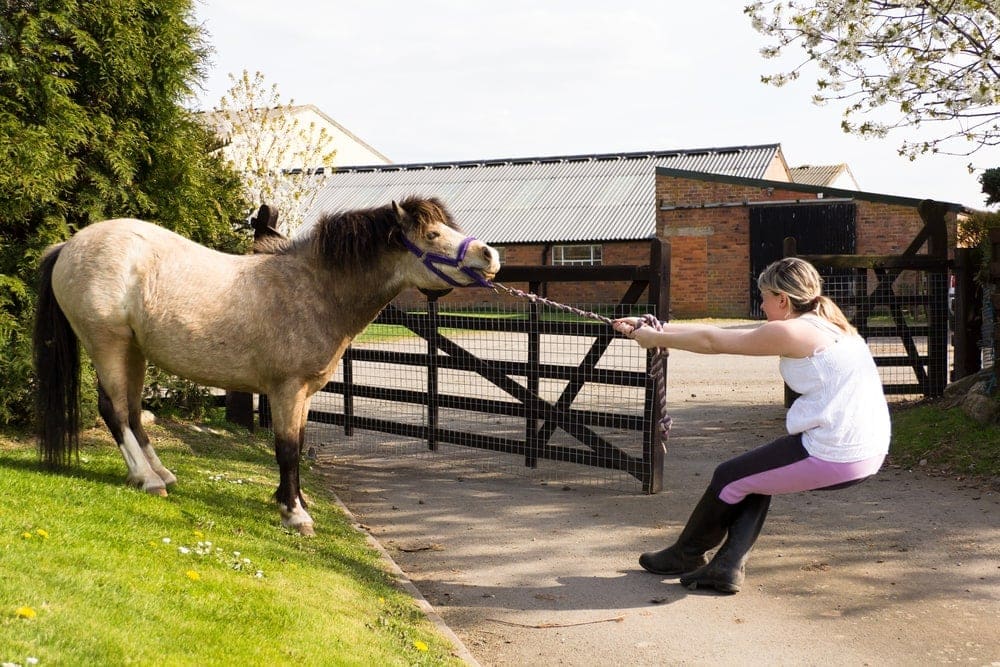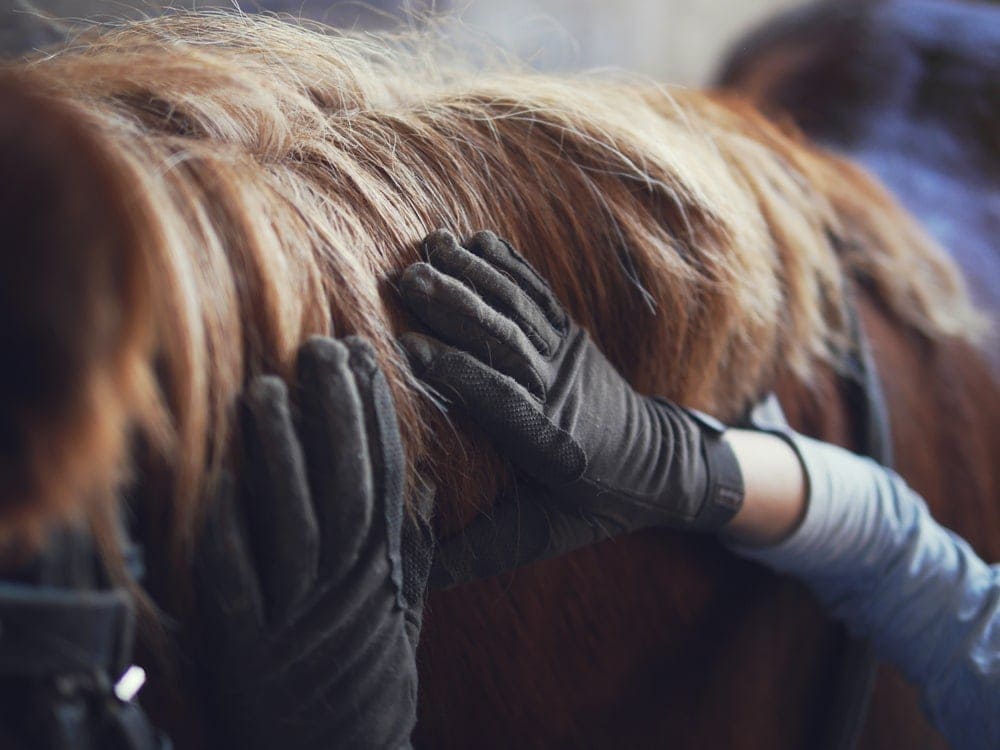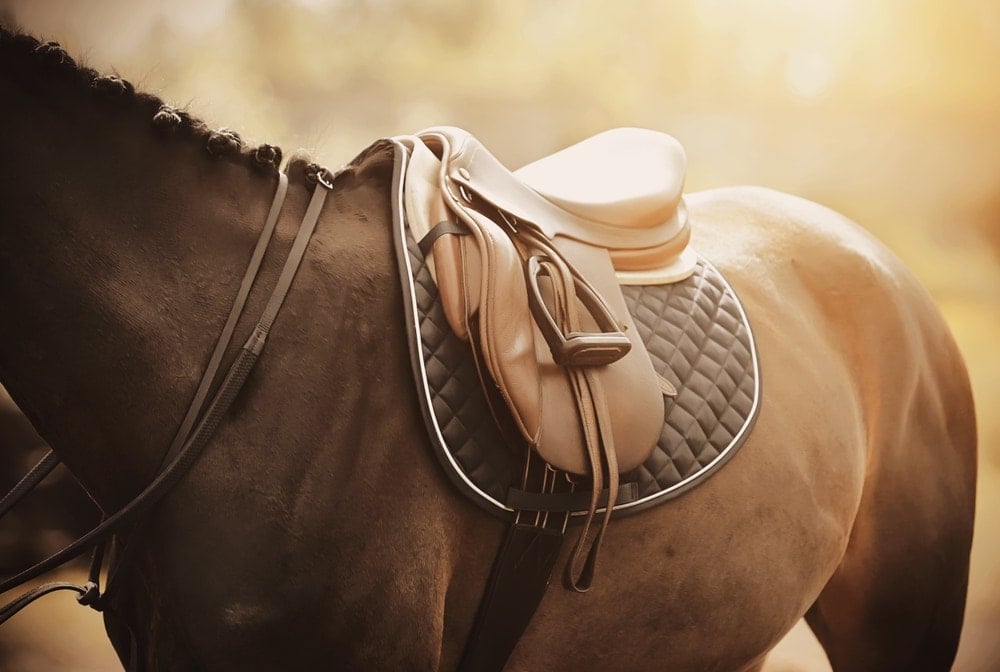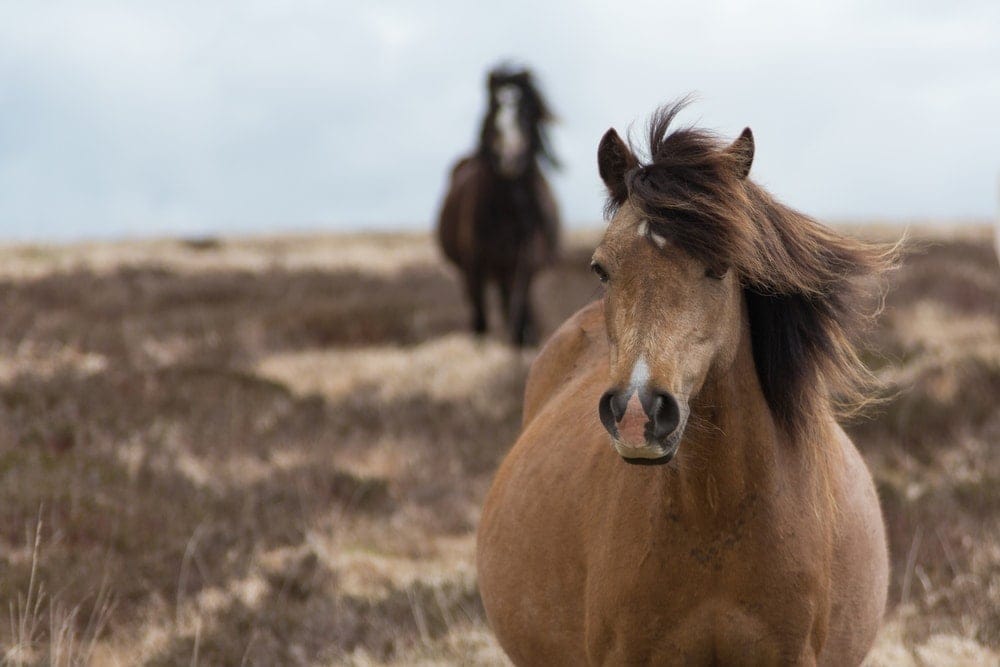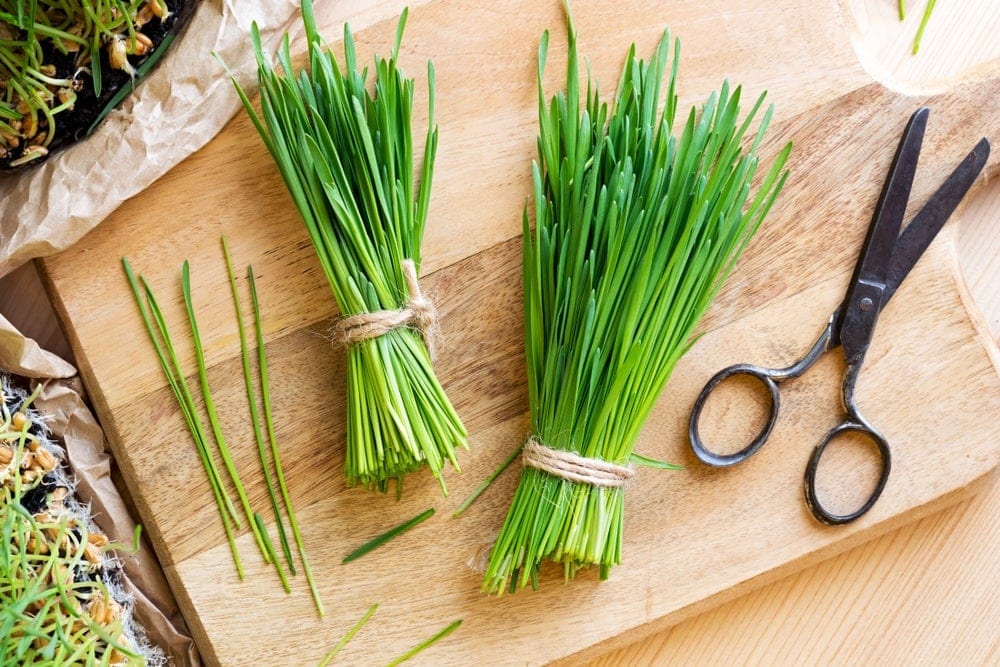You have just acquired a horse or new to horse riding. What does balking mean in regards to a horse?
What is the rider supposed to do about it? Read on to find the answers to these questions.
What Does Balk Mean?
This means that a horse is refusing to move forward. It seems that many children’s ponies and riding school horses have this behavior down pat. The normal reaction by inexperienced riders is to drum their heels on the horse’s sides and pulling back and forth on the reins. Most horses have learned to ignore this completely. In reality, all you need to do to get a horse to move forward is leg cues and an assertive seat.
Why Horses Balk?
A horse will balk for many different reasons. Some horses become nervous about a situation and instead of spooking and trying to run away, they just freeze. This type of horse lacks confidence so they need to be ridden by a rider that they trust.
They may also balk because they are feeling pain. Ponies especially could be wearing saddles that are ill-fitting. They may be foundered, which is a condition that causes hoof pain. It could also be teeth issues, chiropractic issues, stomach ulcers, or vision problems. Have them checked out by a veterinarian to rule out any health issues before you start to proceed with the balking, which is probably a behavioral issue.
Sometimes the rider is giving the horse conflicting directions, such as urging it on with their legs but pulling on the reins inappropriately. There are some horses, especially riding school horses that are bored by their work and use it as a way to ignore their rider. Ponies are smart and once they have learned that they do not have to obey a young child, they will use balking as their go-to-response when the child wants them to do something.
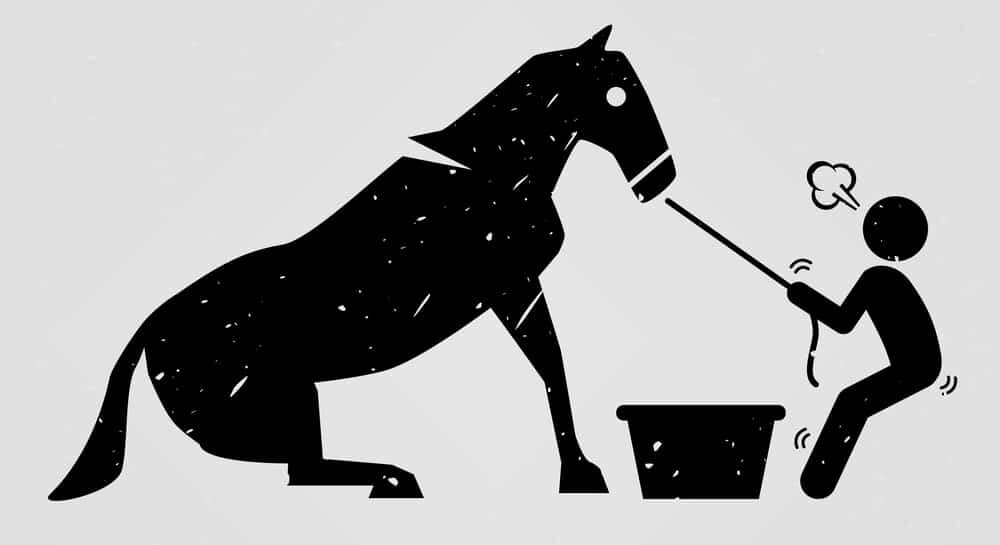
They could be herd-bound, which means that the horse resists leaving the herd, their mate, or the barn. They do not want to be away from things that they find comfort in or enjoy. If you get them out on the ride, they may plant their feet and refuse to go any farther. The horse may walk slower going away from where they feel comfortable than they do when they are returning.
When the horse resists moving on the trail because of a railroad crossing or bridge, or in an area because of a scary spot with a banner or flag, it could be that the horse lacks confidence. The horse may try to move away or just stands still. Horses are prey animals so they fear many things. They stayed alive in nature by moving away from anything suspicious, like a scent, sound, or sight.
It can also be rider error. You are giving your horse conflicting instructions and they are not sure what you want them to do. The rider could also be pushing the horse too hard, not giving them time to think and do what you want them to do.
What to do About It
One way to deal with a balking horse is to use the team method that uses the Dingo Cue. If the horse starts to balk, the one on the ground can lightly touch a whip to its haunches to indicate it should move. It can also be done by one person, with the one in the saddle using the whip. You should only gently tap the horse, not hit it.
Another way is to busy their mind with something else. If they do not want to go forward, you can turn your horse in a small circle using your reins, legs, and seat aid. You do not want to spin the horse so it becomes disoriented but just to take their mind off balking. If the horse is just being ridden around a ring, it could be bored so try doing something else. You could use the horse for a trail ride.
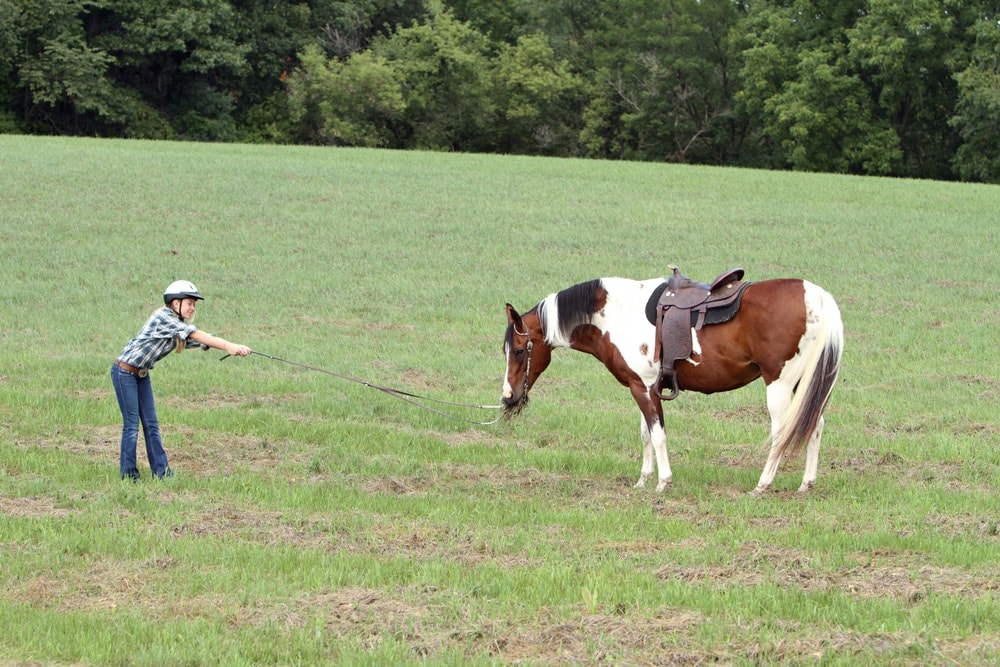
If the reason is that they are herd-bound, you will need to get the horses respect and get them to focus their attention on you. Before you even leave the barn or area you should do some mounted exercises, like footwork or circle movement. This will get the horses attention on you and away from what is preoccupying them.
Once the horse is focused on you, immediately take him out of his comfort zone because if you pause too long, the horse’s mind will wander back to their comfort zone. You may have to repeat some of the exercises before the horse will obey. You will just need to be firm, deliberate, and patient.
If a horse lacks confidence, the rider has to help them to trust their judgment to keep them safe. When a rider knows what is scaring the horse, find out just how close they will get to it. Give them time to look at it before you give the command to move forward a couple of steps. It will take time and patience to build their trust in you so they will feel confident to go where you want them to go.
Do not push them but give them time. If you push them, they could rear up, and throw you off, or fall backward on you. It will also break their trust in you. Also, be consistent with your cues or instructions so they know what to do. Be gentle when pulling on the reins or using your legs to get them to do what you want.
When Balking Can be Dangerous
Balking can become dangerous if your horse likes to balk and rear up. This can cause injury to both the rider and the horse.
Conclusion
- Some feel that a horse balks because they are lazy but many times, it takes more energy to balk than to do what is asked of them.
- Be patient with your horse and try to understand why they are balking as it could be a health issue and not behavioral.
